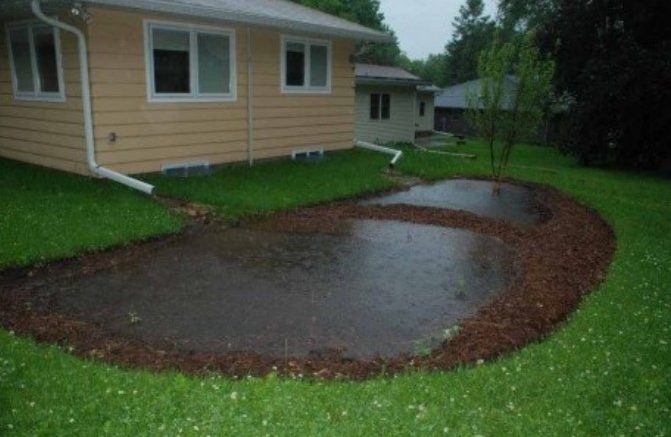When you are thinking about spring projects, consider some tips to enhance water quality and manage stormwater.
Spring has just arrived, which means thousands of Pennsylvanians will soon stroll outside to work in their yards. Individually, most yards in PA are less than 1⁄2 acre, but added together they cover nearly 11⁄2 million acres and produce large amounts of stormwater. Managing this stormwater where it’s created, on each individual yard, is the goal of these early season yard care tips.
Cleanup
Collect and properly dispose of any stray trash winter winds may have left behind. Mulch or compost fallen leaves and garden cuttings you missed in the fall so they don’t get washed away during a spring storm and end up in a stream or lake where they can lower oxygen levels.
Patch Grass
Inspect for bare spots in your lawn and landscape beds, especially if they are located on a hillside. A thick lawn produces less runoff than a thin lawn with exposed soil. Reseed grass in mid-spring, when the threat of hard frost is past but it’s still too early for most weeds to grow. Add a layer of mulch to bare planting beds anytime, and consider planting them permanently with native meadow plants or groundcover before the summer heat arrives.
Test Soil
Collect a soil sample from your lawn and have it tested so you know how much fertilizer to buy. Excess fertilizer won’t improve grass growth and could pollute local waterways, including groundwater. Soil test kits, with instructions, are available from some commercial lawn care firms, garden centers, and every county Penn State Extension office.
Fertilize Carefully
Nitrogen is commonly the most important nutrient for good grass growth. Unfortunately, it’s not easy to measure with a soil test. Instead, careful experimentation is the best way to determine how much nitrogen your lawn needs. For established lawns, applying around 2 pounds of Nitrogen per 1000 square feet of lawn, per growing season, is a starting rate that balances typical grass needs against water pollution concerns. Look for a slow-release nitrogen fertilizer because these are less likely to harm water quality. Several small fertilizer applications spread over the growing season are better than one single spring application. Penn State Extension suggests applying 1/3 in mid-spring, 1/3 in late summer, and 1/3 in late fall. If your grass grows well at this level, try reducing the application rate next year.
Mulch Clippings
Grass clippings are a free source of nitrogen fertilizer, so let them decompose into your lawn.
Mow Sharp and High
A sharp mower blade cuts grass cleanly which improves turf health and promotes denser growth. Setting the mower deck high, 2 1⁄2 inches or more, helps lawn grass shade-out weeds and survive dry spells, reducing the need for weed control and irrigation.
Sweep Away Clippings and Fertilizer
Use a leaf blower or a broom to push stray grass clippings and fertilizer granules off sidewalks and driveways onto your lawn where they can do some good. Otherwise, they turn into runoff pollution when they wash into storm sewers, ditches, and streams.
Plant Trees and Shrubs
Spring is a good time to plant native trees and shrubs which provide important water quality benefits. They reduce stormwater when their leaves intercept rainfall, increase infiltration when their roots penetrate the soil, and filter pollutants in the rich leaf litter that gradually develops beneath their canopy. If you plant them along the edges of your lawn, they also gradually shrink the total area you need to mow.
Aerate Turf
Grass does best, and traps more stormwater, when it grows in loose soils. Surprisingly, many home lawn soils are just the opposite. They’re often compacted from years of heavy use including outdoor parties, riding mowers, small tractors, and even parked cars. If your grass struggles despite proper fertilization and watering, compaction may be the problem. Core aeration is a process that removes finger-sized soil plugs from the top layer of a lawn so air and rainwater can support better root growth. Most yard care companies offer core aeration as a service and many garden centers rent the equipment for ambitious DIYers.
Go Big
Is this your year to install a major water quality practice in your yard? Possibilities include replacing turf with native meadow plants; protecting a stream or drainage swale with native trees and shrubs; capturing the discharge from your downspouts in a rain garden, or rain barrel; or redirecting any downspouts that currently spill onto sidewalks or a driveway into your lawn or planting beds so the stormwater soaks into the ground instead of running off. Finishing these projects in the spring means you get to watch them provide water quality benefits before winter returns.
This educational blog is a series of informative articles from the Penn State Master Gardeners volunteers plus news concerning the group and their activities. For more information, click here.




































